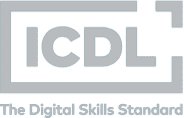
Mastering the 4 Ps: A Blueprint for Marketing Success
In the ever-evolving world of business, few concepts have remained as enduring and influential as the 4 Ps of marketing. These foundational pillars — Product, Price, Place, and Promotion — serve as the compass by which companies navigate their way to success. They create offers that resonate, price them appropriately, ensure they reach the right customers, and communicate their value in compelling ways.
Knowledge of the 4 P’s of marketing is not only essential for any marketer, but it opens doors to a wide range of job opportunities.
This article will take a look at each “P” in turn, to examine their importance both individually and as part of the whole marketing strategy, before showing how you can use this knowledge to further your career.

1. Product: Crafting the Perfect Offering
At the heart of every successful business lies a product or service tailored to meet a specific need or solve a particular problem. The art of product development goes beyond mere creation — it is a continuous process of understanding, adapting, and innovating.
Knowing Your Customer
To truly resonate with consumers, businesses must immerse themselves in the desires, preferences, and pain points of their target audience. This involves extensive market research, feedback loops, and iterative testing.
Once this information is acquired, it serves as the blueprint for crafting an offering that aligns seamlessly with customer expectations.
More Than Just Functionality
The importance of product design cannot be overstated. A well-designed product is not only functional but also appeals aesthetically and emotionally to its users. The Apple iPhone, for example, has moved beyond merely a mobile phone. Its sleek design, user-friendly interface, and premium feel have made it an iconic product and an integral part of our lives.
The Importance of Quality in a Saturated Market
Quality, too, is a cornerstone of product success. In an age where consumers are bombarded with choices, a sub-par product can quickly become lost in the noise. Consistent quality assurance ensures that consumers can trust the brand, fostering loyalty and encouraging repeat business.
Standing Out
Lastly, differentiation is the special ingredient that sets a product apart from its competitors. It’s what makes a product unique, be it through innovative features, exceptional service, or a compelling backstory. It tells customers why they should choose one product over another.
A product is more than just an item on a shelf or a service offered. It’s a promise to consumers, a testament to a company’s commitment to meeting their needs, and it embodies their brand’s value proposition. Crafting the perfect offering is an art and science, and those who master it stand at the forefront of business success.

2. Price: Strategic Valuation
Crafting an effective pricing strategy is more than simply determining what price will cover costs and deliver desired profit margins.
A Balancing Act
Pricing is a delicate balancing act. On one side of the scale, businesses need to consider their internal costs — raw materials, labour, overheads, and other production expenses. But mere cost-based pricing can be limiting. Why? Because it overlooks other factors at play.
Enter the Realm of Competition
In highly competitive markets, where products or services are relatively similar, the market price often becomes the benchmark. Take the airline industry, for instance. Often, airlines offer similar routes, similar in-flight experiences, and amenities, leading to fiercely competitive ticket pricing.
The Part Played by ‘Value’
Yet, there’s another dimension to pricing: perceived value. Two products might cost the same to produce, but if one product is perceived as superior — due to branding, reputation, or other intangible factors — it can command a higher price.
Luxury brands like Rolex and Louis Vuitton are prime examples. Their products are not just priced for their material worth but for the prestige and status — the added value — they confer upon their owners. Also consider e-books. Although they have no physical printing costs, they are still priced to reflect the value of the content and the intellectual property they contain.
While the number on a price tag might seem straightforward, the strategy behind it is anything but. It’s a blend of mathematics and psychology, of hard numbers and soft perceptions. And in these delicate calculations, businesses must be both strategic and agile, ever attentive to shifting market dynamics and consumer preferences.

3. Place: Navigating Distribution Channels
Of course, the most innovative product or the most compelling promotion is of little value if it doesn’t reach the right audience at the right time and in the right way.
At its core, the ‘place’ element concerns itself with distribution channels — how products and services move from the producer to the end consumer. These channels might be direct, such as selling products online through a company’s website, or indirect, involving intermediaries like retailers or wholesalers.
Reaching the Right Audience
Effective channel strategies require a keen understanding of the market. For instance, a luxury brand might opt for exclusive boutiques in high-end shopping districts, while a mass-market consumer good could benefit from widespread distribution in supermarkets and convenience stores.
Logistics is integral to effective distribution. Efficient supply chain management ensures that products are available when and where consumers want them, minimising stockouts or overstocks. Successful businesses like Amazon have turned logistics into a competitive advantage, promising rapid deliveries that few can match.
Drawing from the world of education, consider the rise of e-learning platforms. Students now access top-quality resources and courses from the comfort of their homes, breaking down traditional limitations of geography. Pitman Training has exemplified this approach. Recognising the diverse needs and schedules of its students, Pitman provides different types of training — both in-person training centres and online courses.
Ensuring that products and services are not just available, but easily and conveniently accessible, is a cornerstone of successful marketing.

4. Promotion: Crafting Compelling Campaigns
Promotion isn’t merely about informing; it’s about engaging, persuading, and forging connections. It is the voice of a business, articulating its value proposition and setting it apart in a crowded marketplace.
Promotional Tactics
Promotional tactics span a broad spectrum:
- Advertising: Perhaps the most recognised facet of promotion, advertising uses various media — from television and radio to online ads and billboards — to broadcast a brand’s message. Take Nike’s iconic “Just Do It” campaign; it transformed a simple slogan into a global rallying cry, epitomising the power of effective advertising.
- Branding: Beyond logos and taglines, branding is about creating a unique identity for a business. It’s the story, the ethos, and the promise that a company presents to the world. Apple, for instance, isn’t just a tech company; its branding speaks of innovation, design, and a certain lifestyle aspiration.
- Marketing Communication: This includes a suite of tools such as public relations, social media marketing, and content marketing. Starbucks, for instance, uses its social media channels not just to promote products but to build a community, sharing stories that resonate with its audience and build brand loyalty.
Through its comprehensive coursework, learners with Pitman Training get hands-on experience in crafting marketing campaigns, understanding audience segmentation, and deploying the right promotional tools for maximum impact. Just as a compelling promotional campaign can catapult a brand to stardom, Pitman’s courses empower its students to become the marketing maestros of tomorrow, ready to capture audiences and drive business success.

Elevate Your Skills with Pitman Training
In the modern business landscape, adaptability and continuous learning aren’t just admirable traits — they’re necessities. And when it comes to comprehensive, industry-relevant training, few institutions match the calibre of Pitman Training.
Pitman Training’s Marketing courses offer learners the opportunity to further their knowledge of how these crucial marketing functions work, both in isolation and as part of the broader marketing strategy. By delving deep into what the 4 Ps of marketing are, it prepares learners to not just participate in the business world but to shape and lead it. If you’re poised to embark on a journey of professional growth, remember: the power of the 4 Ps awaits, and with the right training, its potential is yours to unleash.



















